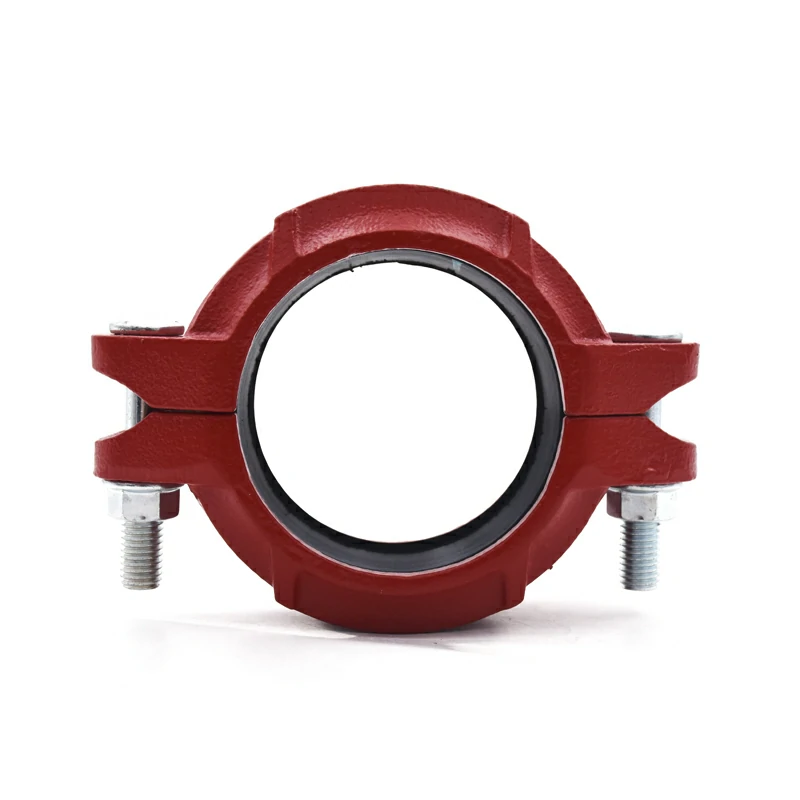Rigid steel couplings offer several advantages, but they also come with limitations and challenges that should be considered when selecting them for specific applications.
Some of the common limitations and challenges associated with using rigid steel couplings include:
- Lack of Misalignment Tolerance: Rigid steel couplings are not designed to accommodate misalignment between connected shafts. Even minor misalignment can lead to increased wear and potential component damage, making them unsuitable for applications with significant shaft misalignment.
- Transmitting Vibration and Shock: Rigid couplings are less effective at dampening or absorbing vibration and shock compared to flexible couplings. In applications with high levels of vibration or shock loads, they may not provide adequate protection to connected components.
- Critical Alignment Requirements: Achieving precise shaft alignment is critical when using rigid steel couplings. If the alignment is not perfect, it can lead to increased wear and reduced equipment lifespan. Proper alignment requires skilled personnel and alignment tools.
- Limited Compensation for Thermal Expansion: Rigid couplings do not accommodate thermal expansion or contraction in the connected shafts. In applications with temperature fluctuations, thermal expansion can lead to axial forces on the equipment and may cause issues if not addressed.
- Transmitting Torque Peaks: Rigid couplings transmit torque directly from one shaft to another without any buffering or shock absorption. This means that any sudden spikes in torque can be directly transferred to the equipment, potentially causing damage or system instability.
- Difficulty in Maintenance and Disassembly: Rigid couplings may be challenging to disassemble, especially if they have been in service for an extended period. This can complicate maintenance and repair procedures.
- Limited Application in High-Speed Rotating Equipment: In high-speed applications, the high rotational forces and potential imbalances can make rigid steel couplings less suitable, as they can exacerbate issues related to vibration and misalignment.
- Cost: While rigid steel couplings are generally durable, their initial cost and the cost of installation may be higher compared to some other coupling types, which can be a consideration for projects with budget constraints.
- Weight and Space Constraints: In applications where weight and space are critical factors, rigid steel couplings may be less ideal due to their bulk and weight.
- Corrosion Resistance: Depending on the environment, steel couplings may be susceptible to corrosion, especially if not properly coated or protected. This is a consideration in outdoor or corrosive settings.
To mitigate these limitations and challenges, it’s essential to carefully evaluate the specific requirements of the application and consider alternative coupling types, such as flexible couplings or grid couplings, when necessary. Proper maintenance and alignment procedures are also crucial to ensure the successful use of rigid steel couplings.
In which industries or applications are rigid steel couplings most commonly used?
Rigid steel couplings find common use in various industries and applications where their specific characteristics and advantages are well-suited.
Some of the industries and applications where rigid steel couplings are commonly used include:
- Industrial Machinery: Rigid steel couplings are widely employed in industrial machinery, such as conveyors, pumps, compressors, and gearboxes, to provide a strong and secure connection between shafts.
- Material Handling: Material handling equipment, rigid steel coupling including belt conveyors, bucket elevators, and screw conveyors, often use rigid steel couplings to maintain alignment and transmit torque efficiently.
- Agriculture: Farm equipment, like tractors, combines, and irrigation systems, may utilize rigid steel couplings to connect various components, ensuring reliable power transmission.
- Mining: In mining applications, rigid steel couplings are used in equipment like crushers, conveyors, and drilling rigs to handle heavy loads and maintain alignment in demanding conditions.
- Pulp and Paper: Rigid steel couplings are commonly employed in paper processing equipment, including paper machines, rollers, and winders.
- Petrochemical: Oil and gas industry equipment, such as pumps, compressors, and rotating machinery, often relies on rigid steel couplings for their strength and durability.
- Marine: In marine applications, rigid steel couplings are used in ship propulsion systems, winches, and other equipment to transmit power reliably and withstand harsh marine environments.
- Power Generation: Power plants, including thermal, hydro, and wind power facilities, use rigid steel couplings in turbines, generators, and other rotating machinery.
- Aerospace: In some aerospace applications, where precision and reliability are paramount, rigid steel couplings are used in equipment such as aircraft landing gear systems.
- Automotive: While not as common as other coupling types, rigid steel couplings can be found in specialized automotive applications, such as certain industrial vehicles and machinery.
- Renewable Energy: In renewable energy sectors like wind and solar power, rigid steel couplings are used in wind turbine generators, solar tracking systems, and other equipment.
- Construction: Construction machinery, including cranes, concrete mixers, and piling equipment, may employ rigid steel couplings for power transmission.
- General Manufacturing: Rigid steel couplings are used in a wide range of general manufacturing applications where reliable and robust power transmission is essential.
- Custom Machinery: Rigid steel couplings are often utilized in custom machinery designed for specific applications or industries, where their specific characteristics are advantageous.
Rigid steel couplings are valued in these industries for their ability to provide a precise and durable connection between shafts, ensuring efficient power transmission and minimizing the risk of misalignment or vibration issues. However, it’s important to carefully assess the requirements of each application to determine if rigid steel couplings are the most suitable choice.
